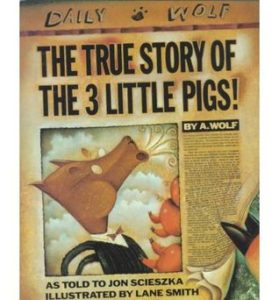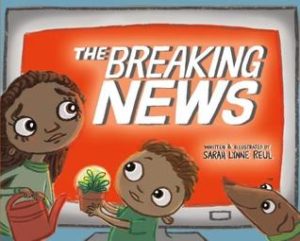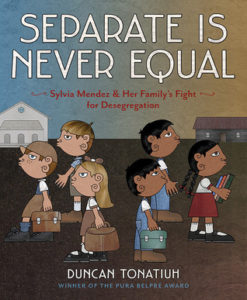 Click here to hear Mathu read the post
Click here to hear Mathu read the post
Empathy, defined as feeling and acting out of compassion for others, is not an inherent human trait, but a skill that built over time. Like any skill, the earlier we learn it, and the more we practice it, the better at it we become. Developmental psychologists believe that children can start to learn empathy as early as two or three years old, which means that families can begin conversations about empathy even when kids are toddlers.
One great way to help children practice empathy is through reading and responding to picture books. The following books and activities are designed to give your child the opportunity to take alternative perspectives, reflect on how their actions affect others, and feel empowered to act on their own.
Perspective-Taking
 Read: They All Saw a Cat, by Brendan Wenzel
Read: They All Saw a Cat, by Brendan Wenzel
In this beautifully illustrated picture book, a series of different animals see a cat from their various perspectives. A flea, for example, sees a large cat, while a bird in the sky sees a small one. A mouse sees the cat as a threat, while a fox sees the cat as lunch.
After reading this book together, ask your child to pick an animal, and to make their own version of the story. How does this animal look to its predators and prey? How does this animal look to different humans? Talk about how just like animals, humans all see things differently. These perspectives aren’t always right or wrong, but they’re unique to each of us.
Read: The True Story of the Three Little Pigs, by J on Scieszka
on Scieszka
You might think you know the story of the three little pigs. But have you ever heard it told by the (supposedly) big bad wolf? In this book, the classic fairy tale villain finally gets to tell his version of the story – and his version is full of surprises.
After reading this book together, ask your child to pick a “bad guy” from a book, story, or television show. What does the story look like from their perspective? Ask them to make a version of the story through the villain’s eyes. Talk about how most people aren’t just good or just bad, but a little bit of both. Also talk about how stories can look very different when we see them through other people’s eyes.
Learning From Mistakes and Making Things Right
 Read: Goldy Luck and the Three Pandas, by Natasha Yim
Read: Goldy Luck and the Three Pandas, by Natasha Yim
In this retelling of Goldilocks and the Three Bears, a young girl named Goldy Luck is asked to take turnip cakes to her neighbors, the pandas, to celebrate Chinese New Year. Goldy goes before breakfast and after a terrible night’s sleep, so after she accidentally enters the house, chaos quickly ensues. Unlike in the original fairy tale, though, Goldy Luck makes a special effort to right her wrongs.
After reading this book together, ask your child to remember a time they made a mistake that affected someone else. How did they feel when it happened? How did they make the other person feel? Ask your child to illustrate or tell the story, and to imagine how they could address the mistake by trying to address what went wrong, just like Goldy Luck did. In the future, refer back to this story when a child apologizes, asking them to go one step further and think not just about the mistake, but how they also how they can fix it.
Kindness and Healing
 Read: The Breaking News, by Sarah Lynn Reul
Read: The Breaking News, by Sarah Lynn Reul
In this book, a family hears some bad news on television. The protagonist, a young Black girl, watches the people around her descend into sadness and fear. She wants to help everyone, but how? The girl learns that small acts of kindness can lead to bigger ones, which in turn can lead to healing.
After reading this book together, ask your child to make a list of small kindnesses they could do for their friends and family. These might include acts they’ve seen in the book, such as reading to a younger child, planting a seed, or making drawings that express their love for others. Keep the list, and every day, do one act of kindness together.
Raising Your Voice For Justice
 Read: Love is Powerful, by Heather Dean Brewer
Read: Love is Powerful, by Heather Dean Brewer
Mari and her mother are going to Mari’s first protest. Together, they make a large sign saying, “Love is Powerful.” But when they get to the protest, there are so many people there that Mari is worried that their message will be lost. How can she make her voice heard?
After reading this book together, ask your child what message they would like your community to hear. Would they like to convey a message about love, kindness, justice, equity, or something else altogether? Together, make a large sign with this message on it. Display it in your window, in your yard, or on your door.
Read: Separate is Never Equal,  by Duncan Tonatiuh
by Duncan Tonatiuh
This nonfiction picture book tells the story of Sylvia Mendez and her family, who, in the 1950s, sued their California school district to end the segregation of White and Latinx students in public schools. Note that this book is high text, and so is appropriate for older kids.
After reading this book, talk to children about what they would like to change about their schools and communities. How did Sylvia create change? How could they create change? Have a discussion about how even young children can take big steps to make their communities better places.








